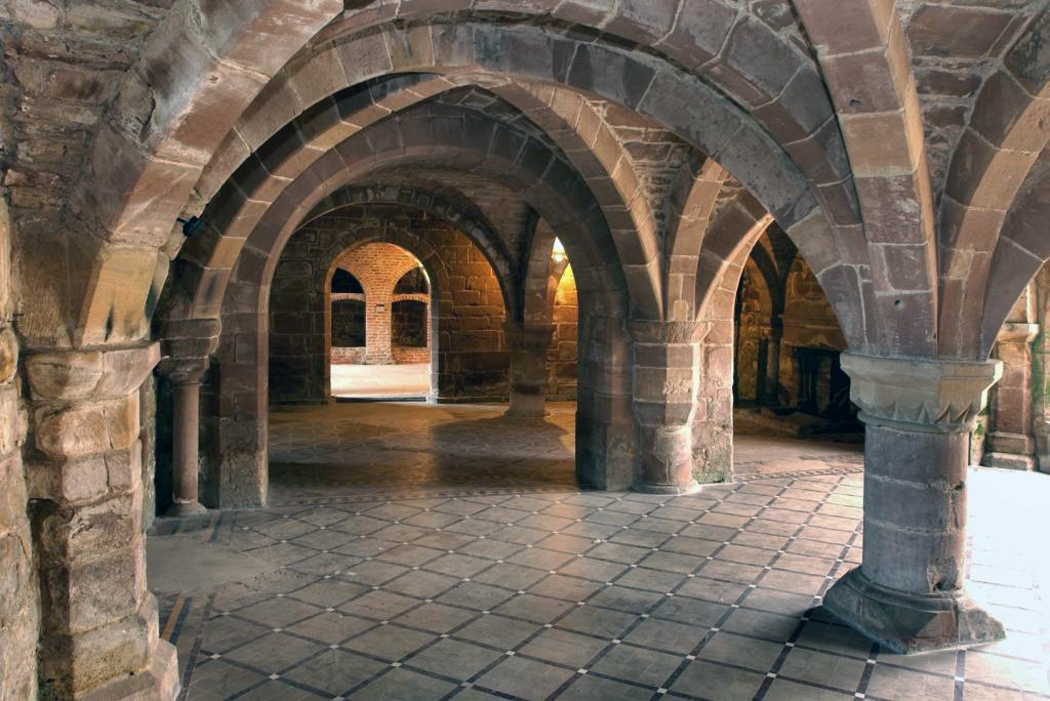Norton Priory was founded 900 years ago. The plan is to turn it into a new state-of-the-art museum complex
 It is 900 years since Norton Priory was established by the second Baron of Halton and Constable of Chester as an Augustinian foundation. It is located on the Southern bank of the River Mersey and may very well have been able to create a substantial income from travellers and pilgrims crossing the river. Perhaps the Priory was even able to exact a direct toll. At least, there is no doubt the river-crossing played a substantial part in the self-understanding of the priory, as witnessed by the huge sculpture of St. Christopher.
It is 900 years since Norton Priory was established by the second Baron of Halton and Constable of Chester as an Augustinian foundation. It is located on the Southern bank of the River Mersey and may very well have been able to create a substantial income from travellers and pilgrims crossing the river. Perhaps the Priory was even able to exact a direct toll. At least, there is no doubt the river-crossing played a substantial part in the self-understanding of the priory, as witnessed by the huge sculpture of St. Christopher.
In 1391 it received the status of Abbey. Closed in 1536 as part of the dissolution it was turned into a reservoir of building material reused in first a Tudor manor and later a Georgian house on the site.
In 1971 excavations on the site began. These revealed the foundations and lower parts of the monastery buildings and the abbey church. The very extensive excavations have made Norton Priory one of the most well-known medieval archaeological site, not least because it is possible to follow the development of the site from the earliest temporary buildings, the monks lived in while erecting the church and their future living quarters to the Tudor manor house built much later. It was during these excavations that the foundations and undercroft of the medieval priory were exposed. Hundreds of artefacts were also discovered including a twice life-size statue of St Christopher, a large amount of medieval floor tiles, stone carvings, pottery, glass, wood, leather and skeletal remains. In the 70s the priory was opened as a museum and in 1984 a separate walled garden was designed and opened to the public.
To celebrate this landmark work is about to start on an ambitious project to build a new museum, visitor centre, galleries and café. The plans to redevelop Norton Priory were set in motion in 2008 as the current museum building was in poor condition with leaky roof, poor drainage and no heating system. Eventually, by 2010, conditions had deteriorated to the extent that there was an outbreak of mould in the collections store and the entire collection had to be relocated off-site with the help of Halton Borough Council.
“The redevelopment will allow us to reveal the whole story of Norton Priory over the past nine centuries,” says learning and education officer Claire Broadhurst to Museums & Heritage. She continues: “While the story of the medieval priory is very important, the later stories of a Tudor hall, then a Georgian mansion being built on the site haven’t enjoyed as much prominence. The exploration of the post-Reformation history will also be helped by the improved environmental conditions in the new museum allowing fragile artefacts to be displayed.”
Currently Earthworks Archaeology is on site completing preliminary works in areas where new foundations are required for the redevelopment. The archaeologists have also taken up the tile floor in the medieval undercroft where conditions had become extremely damp and the floor had started to sink in some areas causing the tiles to raise and crack. The redevelopment work will substantially improve the environment in the undercroft, and a geo-textile membrane will be put in place to support the tiles and prevent the floor from sinking in the future.
The comprehensive redevelopment will see a new first floor gallery above the undercroft, developed through consultation with English Heritage. This gallery will have a pitched cedar shingle roof and cedar cladding both being centuries old construction methods, yet able to mix with the demands of a modern museum. Large windows will be fitted looking over the medieval ruins providing a link between objects and where they were found.
“The undercroft is one of few features on site that has survived all phases of development since the 12th century,” says Broadhurst. “Initially the storage range for the priory, it would have had the Abbott’s Tower and lodgings above. The undercroft became the wine cellar for the Georgian house and had at least two floors above it, including a ballroom.”
The medieval undercroft will be a star attraction at the new Norton Priory Museum complex
The new Norton Priory is scheduled to open in 2016.
READ THE FULL STORY:
Norton Priory – Deeveloping a 900-Year-Old Monastery into a modern Museum Complex
